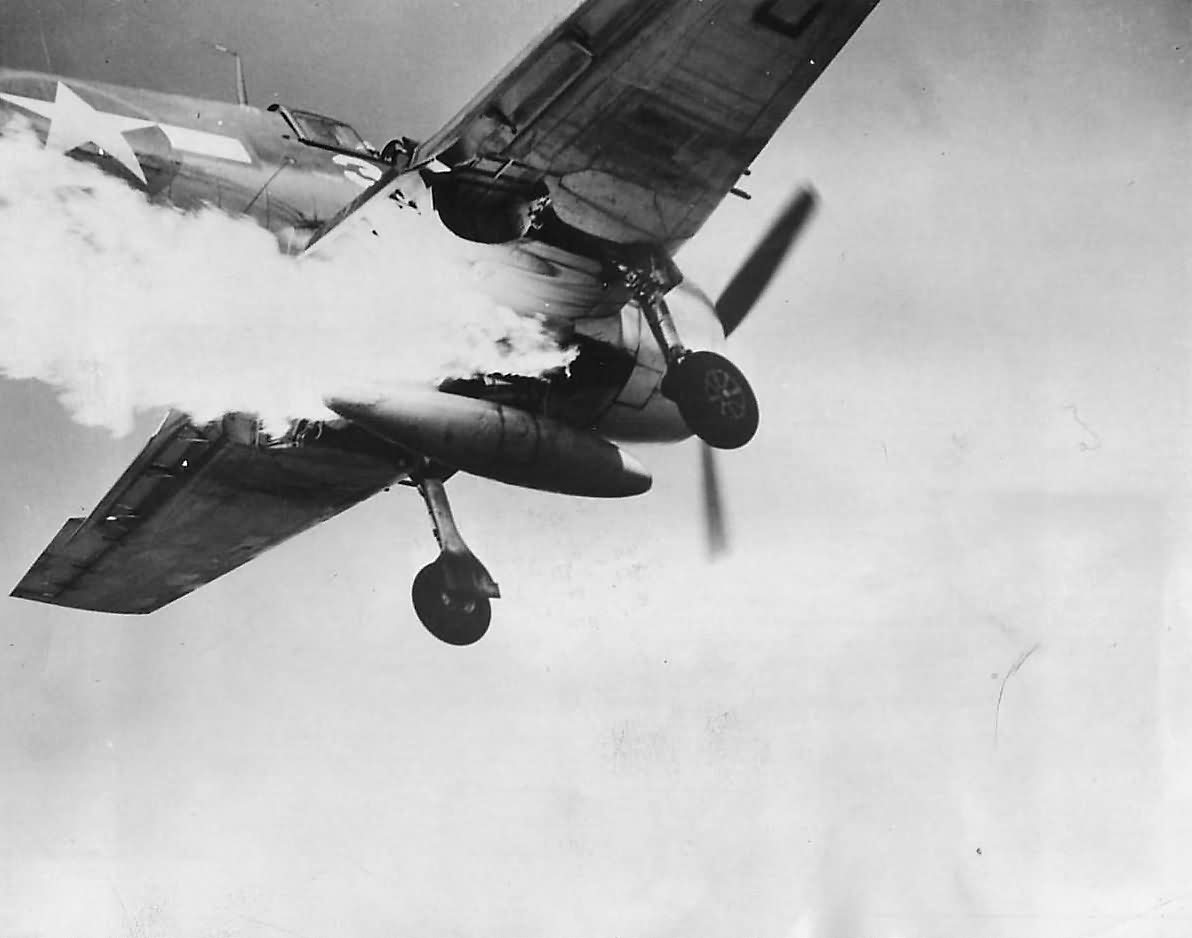The Grumman F6F Hellcat had a robust fuel system that contributed significantly to its range and endurance in combat missions. This system included a combination of internal self-sealing tanks and external drop tanks for extended range, which were critical during long Pacific operations. Here’s a breakdown of how the Hellcat’s fuel system was designed and managed:
Internal Fuel Tanks:
- Main Tanks:
- Two internal main fuel tanks were located in the wing center section, positioned left and right of the fighter’s centerline.
- Each of these tanks held 87.5 gallons, providing a total of 175 gallons in the main tanks.
- Reserve Tank:
- A third, reserve fuel tank was located in the fuselage, behind the main tanks.
- This tank had a capacity of 75 gallons, bringing the total internal fuel capacity to 250 gallons.
By comparison:
- The F4U-4 Corsair carried 234 gallons of fuel internally.
- The P-47 Thunderbolt could carry up to 305 gallons internally in its early models.
Self-Sealing Tanks:
The internal fuel tanks in the Hellcat were self-sealing, designed to prevent fuel leaks in the event of damage during combat. The tanks were lined with:
- A layer of untreated rubber, which swelled when exposed to leaking fuel.
- A covering of vulcanized rubber, reinforcing the tanks’ ability to seal punctures caused by gunfire or shrapnel.
External Drop Tanks:
For extended missions, the Hellcat could carry drop tanks to further increase its fuel capacity:
- A 150-gallon drop tank was typically mounted on the centerline of the fuselage.
- Alternatively, the Hellcat could carry 100- or 150-gallon drop tanks on bomb racks located under the wing’s center section.
These external tanks provided the Hellcat with an extended operational range, which was vital for long sorties in the Pacific Theater.
Fuel Management:
Fuel Selector and Pumps:
- A fuel selector switch in the cockpit controlled the fuel flow from the various tanks. It routed fuel through a strainer and into a pump driven by the aircraft’s engine.
- An electrically driven secondary fuel pump was available for emergencies, engine startup, or to maintain fuel pressure when necessary.
- The fuel selector switch was located on the left side of the cockpit, and a warning light would illuminate when the reserve tank dropped below 50 gallons.
Fuel Gauges:
- Fuel quantity and pressure gauges were positioned in a small panel near the pilot’s right knee.
- This arrangement was critical, as instructors emphasized the importance of monitoring fuel levels during missions. Failing to switch to a tank with fuel could lead to avoidable crashes, despite the aircraft still carrying fuel in other tanks.
Tank Release Mechanisms:
- Drop tanks could be jettisoned using controls on the armament panel or through a fuselage tank release switch located on the left side of the cockpit.
- If a switch failed to release the tank, a manual release T-handle was available for the pilot to use as a backup.
Fuel Transfer:
- The F6F-5 Hellcat model included a feature that allowed the pilot to pump fuel from any of the external or internal tanks into the right main tank once its fuel level had dropped below 81 gallons, ensuring more efficient fuel use during longer missions.
The Hellcat’s well-thought-out fuel system, with its internal and external tanks, self-sealing technology, and multiple fail-safes, provided pilots with both extended range and reliability. This system was crucial in supporting the long-range combat missions required in the vast expanses of the Pacific Theater during World War II.
